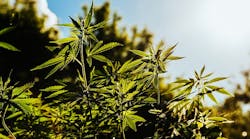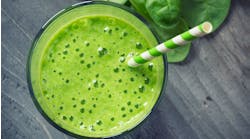Canada made cannabis legal in October 2018 for what might be called “traditional” uses – smoking (dried flowers or buds), tinctures and capsules. Food and beverage products were not allowed in that first year.
“Some people thought there would be stoners hanging out on every corner, but that’s not been the case,” says Cameron Prince, himself a Canadian and VP of regulatory affairs for The Acheson Group, a global food safety consulting group founded by former FDA commissioner for foods David Acheson.
“And because of the limited supply, higher prices and tough regulations, a black market still exists,” Prince adds.
Instead, the Ottawa government took an extra year to study and consider how to allow edible products, and on June 14, 2019, published rules opening up that market.
Health Canada, the country’s FDA and the governing body charged with regulating cannabis sales, started accepting applications Oct. 17, 2019, from companies seeking to produce the second wave of products – edibles, beverages and vaping products. Because of the necessary inspections and approvals, products did not start hitting the market until Christmas, and most not till this new year.
“It’s been an intentionally slow launch. The rules are very restrictive, the labeling very cautious,” says Prince, who in his former life held the most senior executive position at the Canadian Food Inspection Agency as vice president of operations. He also led the Food Safety Modernization initiative now under way in Canada under the Safe Food for Canadians Act.
“The regulatory environment is so strict it actually may need to be relaxed down the road,” he adds.
Simply put, there’s no fancy advertising, there are considerable safeguards to prohibit sales or even marketing to children, including child-proof packaging, and there’s no combining it with alcohol. THC-infused “beers” are non-alcoholic.
New regulations include regulatory controls for production practices, product formulation restrictions, quality standards for ingredients and testing requirements.
Almost all cannabis promotion is prohibited, especially if it could be seen by children. Athletes, stars and other celebrities cannot be used.
Other prohibitions on marketing include:
- Communicating information about its price or distribution
- Doing so in a manner that there are reasonable grounds to believe could be appealing to young persons
- By means of a testimonial or endorsement, however displayed or communicated
- By means of the depiction of a person, character or animal, whether real or fictional
- Presenting it or any of its brand elements in a manner that associates it or the brand element with, or evokes a positive or negative emotion about or image of, a way of life such as one that includes glamour, recreation, excitement, vitality, risk or daring.
Cannabis products cannot be flavored or sweetened. Some promotion (e.g., branding, price and availability) is allowed at the point of sale.
While the law legalizing pot may be federal, provinces control the sales of cannabis products, so there has been great disparity in how permits have been issued and businesses have been allowed to open and operate.
“Some provinces sell it only in government-run stores,” explains Prince. “In Quebec and Saskatchewan anybody can sell it. In Ontario, potentially the biggest market, the government has given it to the private sector but only gave out 40 licenses, so there is a big bottleneck there.”
Brightfield Group, a market research firm, now projects Canada's cannabis industry to total $3.3 billion by the end of 2020, more than double the $1.6 billion in 2019. Sales of "derivatives" -- including edibles, vapes and topicals -- are expected to account for $900 million of sales this year.

